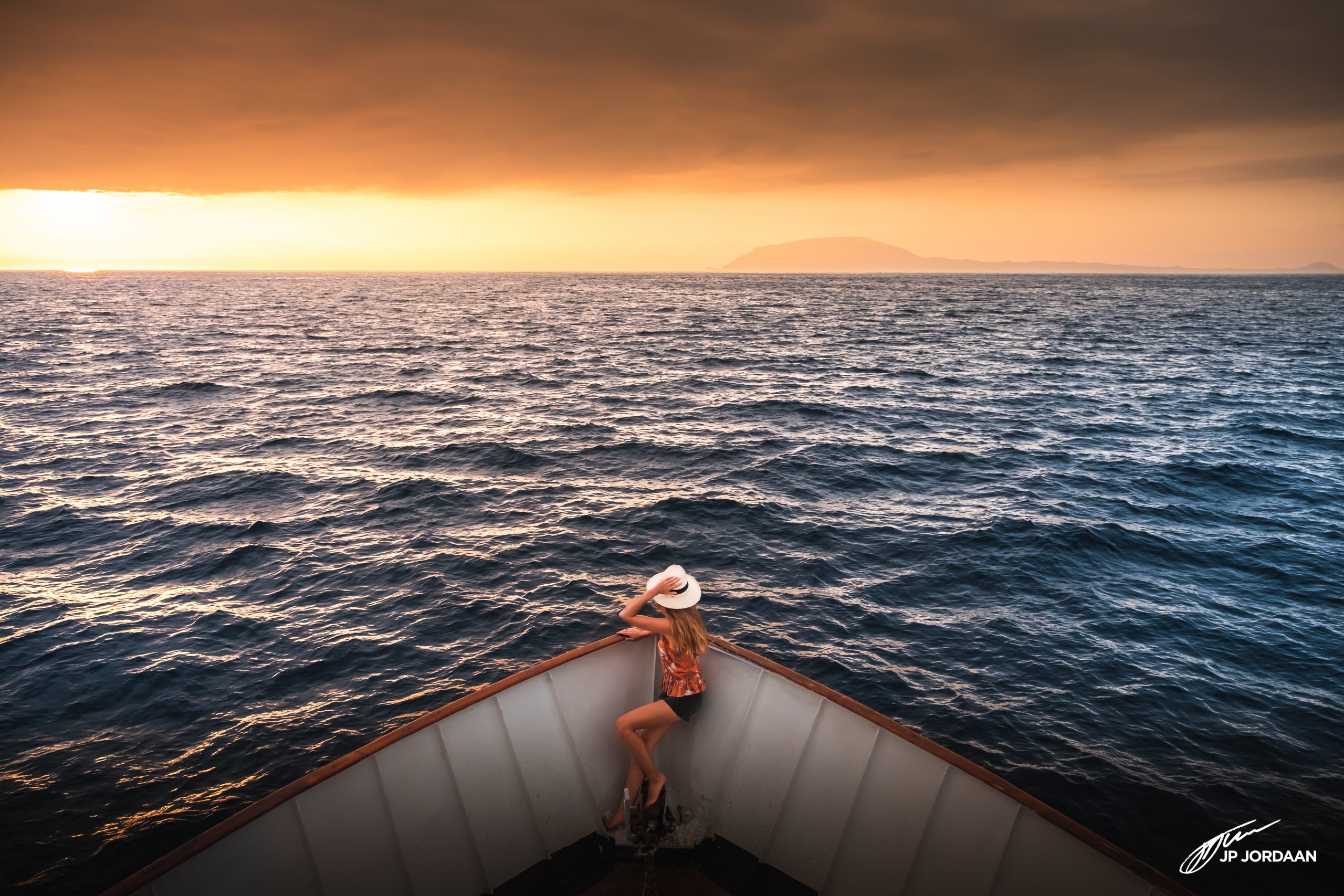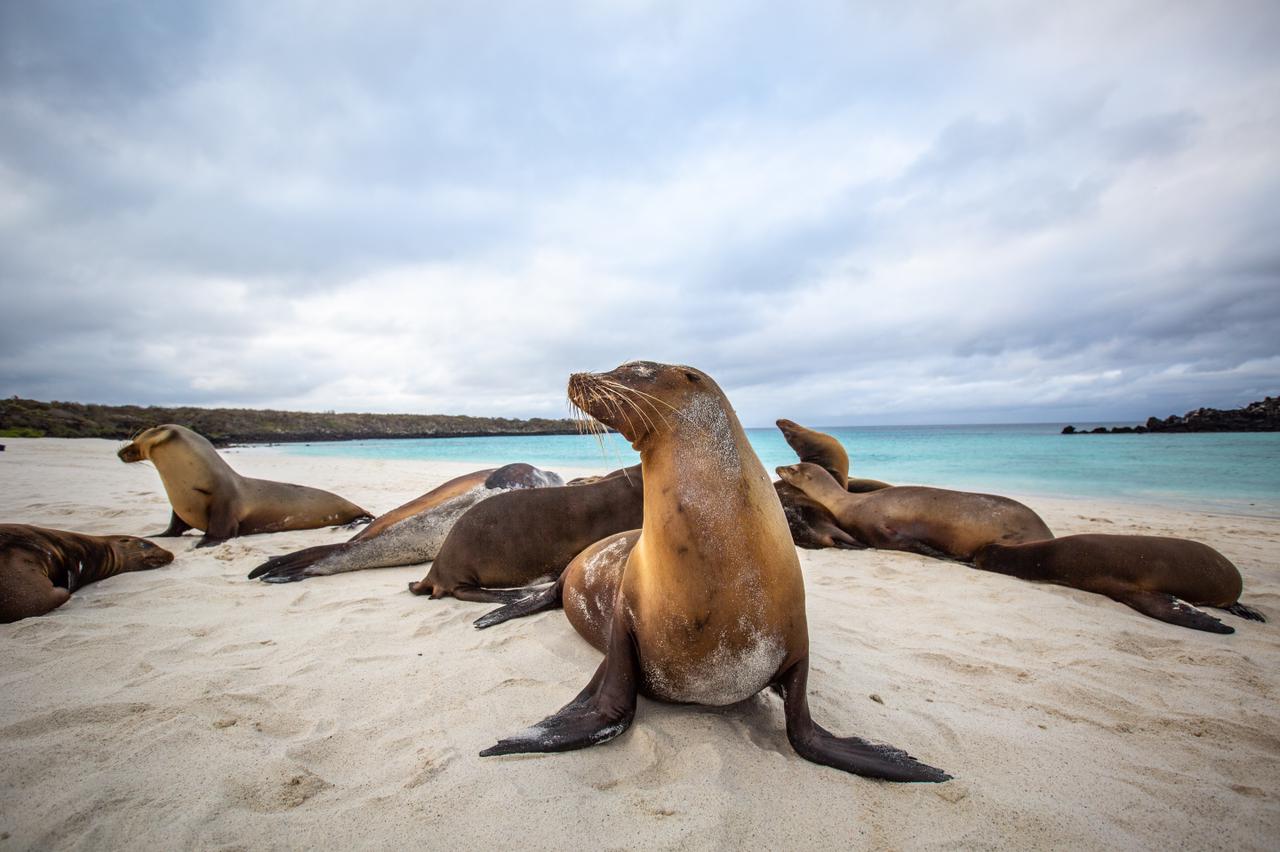AUTHOR The Ecoventura Team
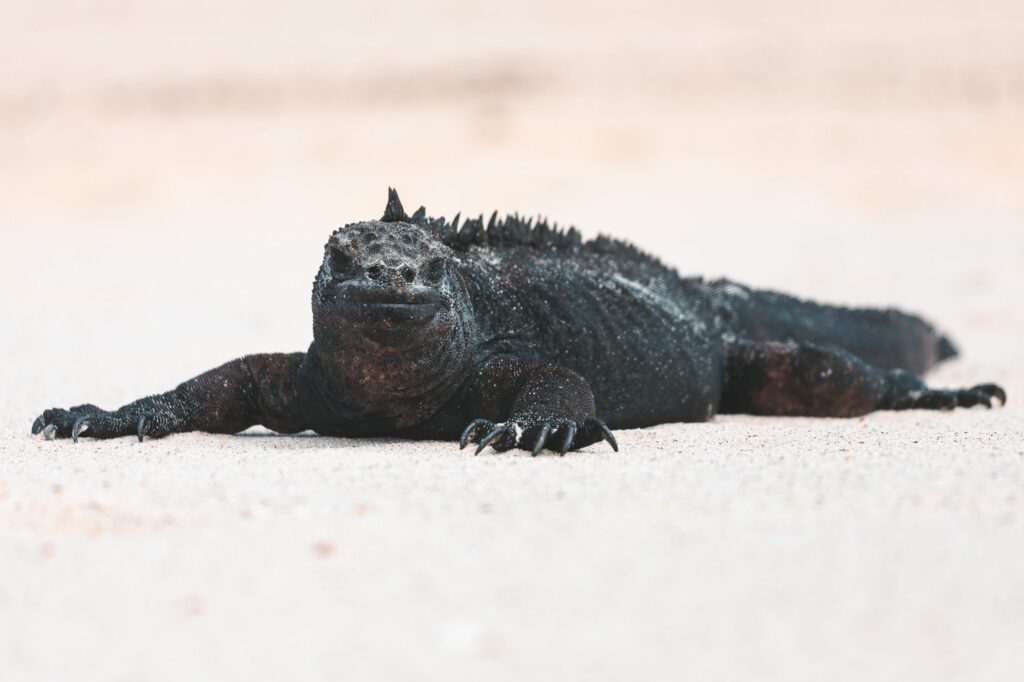
CONSERVATION IN GALAPAGOS
Nature’s Greatest Experiment
“In a lifetime spent making natural history films, I’ve been to many wonderful places, but none more extraordinary than here, the Galapagos Islands. These have been called nature’s greatest experiment, for here life has evolved in isolation, and produced some extraordinary results.”
When even legendary broadcaster and natural historian David Attenborough claims that the Galapagos is the most extraordinary place on Earth, it’s safe to say there must be something special going on.
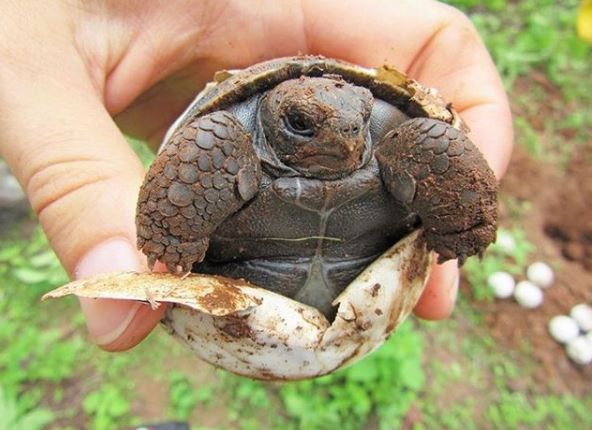
The Galapagos are well known around the world for the stunning array of species that live on the islands and in the seas that make up the archipelago. These creatures – the 13 species of Darwin’s finch in particular – famously inspired Charles Darwin to write his seminal work On the Origin of Species, and the wildlife remains one of the most memorable highlights of any trip for visitors ever since.
A home like no other
A mind-blowing 97% of the reptiles and land mammals are endemic to the region, meaning they are found nowhere else on earth.
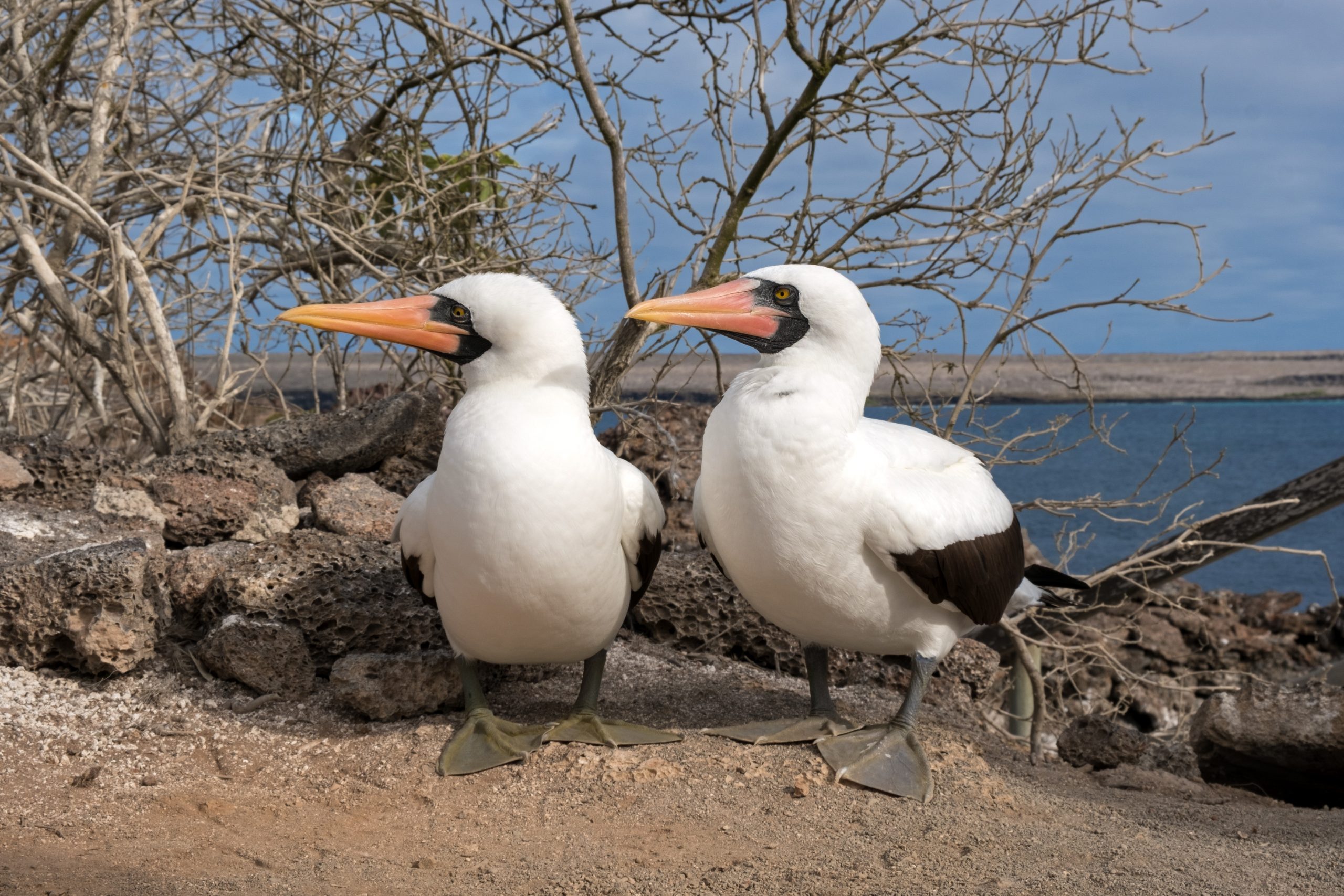
Furthermore, 80% of the land birds, over 30% of the plants and 20% of the marine species are unique to the islands, and this list includes some of the favorites that really put the Galapagos on the map – marine iguanas, the giant Galapagos tortoise and of course the Galapagos penguin, one of the smallest, rarest species of penguin and the most northerly dwelling to boot. Click here to see a video of passengers aboard Theory snorkeling with penguins.

Here at Ecoventura, our itineraries and excursions are designed to allow visitors to see the best of the Galapagos wildlife, both above and below the waves.
Whether it’s families of sea lions sprawled across the beaches or playfully swimming around you as you snorkel, sea turtles bobbing gently in the surf, marine iguanas sunning themselves on the rocks along the shore or blue-footed boobies dancing with their mates, there’s no shortage of magical creatures waiting to discover.
Within the last few months, some of our guests were treated to the incredible sight of a pod of 150 dolphins on a feeding frenzy just meters from where our luxury expedition yacht Theory had anchored for the night.
As we sail the seas around the islands, we are constantly aware that we also have a responsibility to help protect the animals that call the Galapagos home and conserve the region for future generations.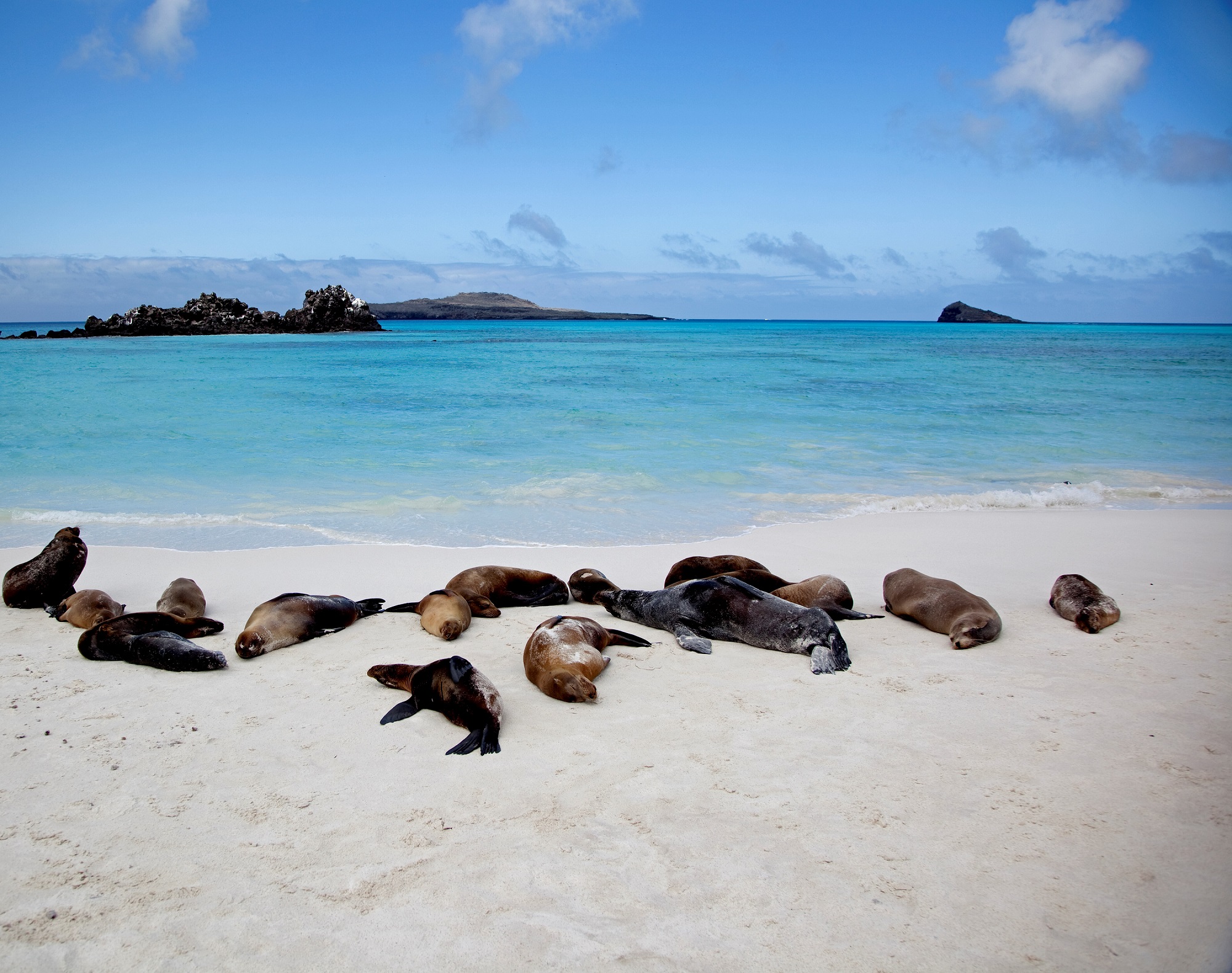
We work closely with various conservation organisations, and recently received a platinum award from the Charles Darwin Foundation in recognition of our ongoing commitment and support.
Thankfully there are many non-profit organisations dedicated to conservation work across the islands, with a few particularly noteworthy developments in recent months.
The search is on

On Fernandina Island, scientists were able to confirm that a lone female tortoise discovered on the island is a Fernandina Giant Tortoise (Chelonoidis phantasticus). This species was last known to have existed 112 years ago and had long been considered extinct.
Plans are now in motion to send a search expedition back to Fernandina Island to find a mate for Fern – as she has come to be known – to ensure the ongoing survival of this newly-rediscovered species.
The search is particularly urgent given the tragic fate of Lonesome George, the Pinta Giant Tortoise who died in 2012; his demise represented the extinction of his own species, and it is very much hoped the Fernandina species won’t suffer the same fate.
Leo goes large
Also recently in the news was Hollywood actor Leonardo DiCaprio’s $43 million donation to enact sweeping rewilding efforts across the Galapagos.
The ambitious campaign, led by Re:Wild and Island Conservation, will aim to eradicate certain invasive species from some islands, such as rats, feral goats and cats, before reintroducing locally extinct species to particular islands.

The Vermilion Flycatcher, the Floreana Mockingbird and Giant Tortoises have all been earmarked for reintroduction to islands where they no longer survive, in a bid to restore the island ecosystems over the next few years.
If you would like to join Leo and others and support such a worthy series of projects, you can donate to Island Conservation here.

In the name of Darwin
Doing justice to the memory of Charles Darwin whose work is still among the most extensive regarding the unique evolution process of the Galapagos Islands, the Charles Darwin Foundation has multiple projects on the go and has recently expanded into collaborations with international universities and organisations such The World Bank and the Gordon and Betty Moore Foundation to enhance their work.
Being awarded funding by these global organisations is increasing the reach and impact of their conservation work.

A seat in the front row
The Ecoventura team is lucky to experience first-hand the incredible nature of the Galapagos Islands. Denise Chalela, our Quality Coordinator, talks about recent changes she has experienced: “Ecosystems are following the course of nature. From our perspective, there are a greater number of animals in certain species and this may be due to the very limited number of visitors. Visiting sites ARE having less impact and this is very noticeable. The snorkeling sites are notably much more conserved allowing a greater sighting of species such as sharks and dolphins. There are a large number of sharks, rays, turtles, and much more. It is a special time to visit.”
See here for a video of a blue-footed booby feeding frenzy filmed by one of our naturalist guides, Cecibel Guerrero.
We are here to help should you have any further questions, please reach out to our team. Contact details can be found below and here.
